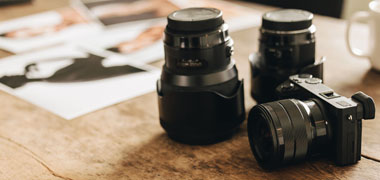
This role has a moderate level of AI exposure. AI can enhance efficiency for some tasks, but this job still relies on human skills and decision-making.
Explore all careersA Director of Photography oversees the visual aspects of film or television, leading camera and lighting teams to achieve the desired look.
In Australia, a full time Director of Photography generally earns $2,000 per week ($104,000 annual salary) before tax. This is a median figure for full-time employees and should be considered a guide only. As you gain more experience you can expect a potentially higher salary than people who are new to the industry.
 Courses.com.au Team
Courses.com.au Team
The number of people working in this industry has grown strongly in recent years, however it is still a profession that hires a small amount of people. There are currently 450 people employed as a Director of Photographer in Australia, compared to 300 five years ago. Directors of Photographer may find work in larger towns and cities where productions are based.
Source: Australian Government Labour Market Insights
 Courses.com.au Team
Courses.com.au Team
An Advanced Diploma of Screen and Media is a great way to kick start your career as a Director of Photography. This course will develop your skills in film making, television projects and stage productions. You could also consider a Bachelor of Screen Production where you’ll get more experience working on your own film projects.
 Courses.com.au Team
Courses.com.au Team
Browse occupations related to Director of Photography



For aspiring filmmakers and visual storytellers, Director of Photography courses in Griffith provide a comprehensive pathway to mastering the art of cinematography. Griffith, located in the vibrant Riverina region of New South Wales, is an excellent location for those looking to delve into the world of film and television production. The courses available are designed to equip students with the necessary skills and knowledge to excel in this dynamic field, ensuring they are well-prepared for a successful career behind the camera.
Students enrolling in these courses will benefit from hands-on training and insights from experienced professionals in the industry. The Screen and Media courses cover a broad spectrum of topics, ranging from the fundamentals of camera operation to advanced lighting techniques. Those interested in focusing specifically on production-related skills can explore Film, TV and Production courses that are designed to provide practical experience, fostering a solid understanding of the entire filmmaking process.
Apart from the role of a Director of Photography, students may find related job opportunities appealing. This includes roles such as Audio Visual Technician, Camera Assistant, and Lighting Technician. These positions are instrumental in the production process and can provide valuable experience, whether you're shooting for a film, television show, or other media projects in Griffith.
The role of a Director of Photography is critical in shaping the visual narrative of a film. It involves a creative collaboration with directors and other crew members to ensure that the artistic vision is realised. As well as course content tailored to this discipline, students may also explore careers as a Production Assistant, Radio Producer, or even a Sound Engineer. Each of these roles plays a part in the rich tapestry of film and production, providing diverse pathways in the industry.
By pursuing Director of Photography courses in Griffith, students are not only honing their craft but are also opening doors to various career paths within the broader media landscape. Related roles, such as Assistant Editor, Stage Technician, and Film Editor, complement the Director of Photography position, making it an exciting time to enter the industry. As Griffith continues to grow as a cultural hub, now is the opportune moment to embark on a rewarding journey in filmmaking and visual media.